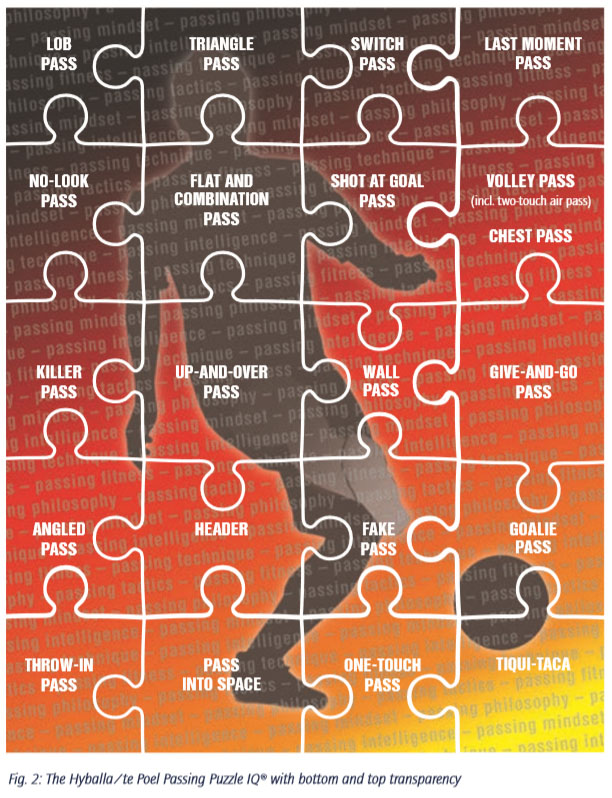 This article is taken from the new eBook – “German Soccer Passing Drills” which is now available in our Webshop!
This article is taken from the new eBook – “German Soccer Passing Drills” which is now available in our Webshop!
“Barça makes the game as simple as possible, breaks it down into its components, the basic parts of soccer, the finely-tuned interplay between ball and legs – an infinite number of short, incisive passes played at the right moment, at the right speed, with the right spin, to the correct foot, to the correct side of the foot. And all of this embedded in the collective movements of a swarm in which each individual always maintains the right distance to all the rest.” (Christian Eichler, Frankfurter Allgemeine Zeitung)
What does the puzzle have to do with the selected Passing Puzzle®?
If one takes a closer look at FC Barcelona’s Tiqui-Taca, it is very similar to a game of patience with at times confusing pass combinations, consisting of individual components of onetouch passes combined with triangle passes, angle, and give-and-go passes.
These are practiced in competition-like conditions. This way, the players can act in tight spaces without losing possession according to their own or the opponent’s game plan to practice wearing the opponent down, resting while in possession, or preparing to switch play or make a run. The situation is the question, the move (here the types of passes) is the answer.

The entire puzzle represents the game (the picture) from which the individual pieces (the details) are derived as puzzles after intensive video analyses (see fig. 2).8 This was the motivation for the choice of the conceptual pair Passing Puzzle®.
Fig. 2 shows the 20 selected puzzles in their entirety as the top transparency on top of the bottom transparency (see fig. 3), consisting of important performance-determining factors in the competitive soccer game.
Suitable for regional and top-level soccer!
Whether regional league or top-level international soccer, the coach or instructor can choose from the 20 puzzles to coach his team or group and adopt the appropriate content (see chapter 4.3). He can also change the chosen terminology and adapt it to his team’s or group’s coaching language.
With the exception of set pieces, the pass never stands apart from the center of practice and playing activity. Thus the killer pass, which is usually played as a last ball into the opponent’s danger zone, can also be interpreted as an up-and-over pass.
The difference between both types of passes is primarily the chief technical characteristic of the pass: The killer pass is often played as a flat pass, or a pass into the seam, and the up-and-over pass, as the name implies, technically is played as a waisthigh or high lob or switch pass.
Another example of the close connections between the individual puzzles is the third man play. In practice or a game this requires a triangle pass, combination pass, or a delayed wall pass. To us coaches and instructors, the reason for this is obvious: We need options for solutions, puzzles, for playing in tight spaces, and we should practice these regularly!
 To read more about the passing puzzle and many other interesting drills for your training, check out the new eBook- “German Soccer Passing Drills” which is now available in our Webshop!
To read more about the passing puzzle and many other interesting drills for your training, check out the new eBook- “German Soccer Passing Drills” which is now available in our Webshop!

